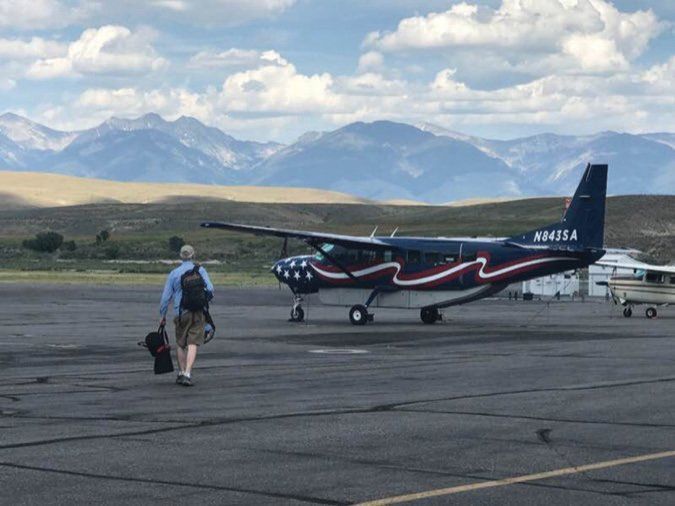A year and a half ago, it dawned on me that what I most enjoyed about my previouscareer as a science communications consultant was when I got to commute to visit clients in my faithful Cessna 180. With some 1500 hours in my logbook—accumulated primarily on those business trips—I sent out my rsum to two area commercial operators. In response, I got two job offers. Wow. What a game-changer for me. I jumped into the Part 135 world with both feet and left my previous career behind. Now, with more than a year under my belt flying for money, I have been reflecting on how profoundly the move from Part 91 to Part 135 has affected my risk management experiences and choices.
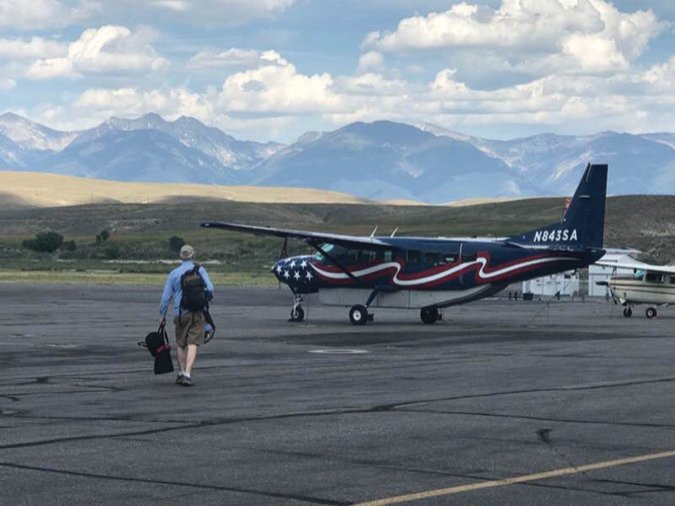
Proficiency
The single biggest safety improvement I have seen in the past year is simply greater overall proficiency. Much of that is due to the big jump in the number of hours I am flying, sharply up from the 150-200 hours a year I averaged over the preceding five years. It’s not a secret that more flying time keeps me (and you) in better practice.
The truth is that flying skills can suffer from disuse. The more we do it, the better we get. The less we do it, the more the rust obscures both our judgment and our muscle memory. When I first began averaging more than 100 hours a year, I noticed I felt a lot safer than when I was flying only 50-60 hours a year. Ipso facto, I feel more confident the more I fly because I am more competent.
I see similar gains in my ability to accept and deal with adverse weather. When I first began flying IFR, my weather minimums were high, and my understanding of real-world weather was low. I simply didn’t fly IFR very often and had no access to aircraft approved for flight in known (or unknown for that matter) icing conditions. That meant I didn’t get much real-world practice. At the beginning of long IFR cross-country business trips, I always felt intimidated because I was marginally competent. But by the end of a week-long trip into the soup, I always felt much greater mastery. If a year passed before I faced that kind of weather again, I had to rebuild my hard-won confidence and competence.
When I passed my initial Part 135 check ride, I finally felt competent in IFR, though still not well-practiced. However, I quickly gained a lot of experience.Now I fly “in the system” in all kinds of weather, including into known icing with the proper equipment. I am still rightly intimidated by ice, but I am getting better at predicting which conditions are acceptable and which are those where I am better off on the ground.
ATC, Airspace Competence
I was recently line-training a “new” pilot who missed a radio call—by new, I mean a recent hire, because he is a retired U.S. Air Force colonel with 16 years flying combat aircraft (A-10s and F-16s), and another 20-plus years flying 737s. He confided to me that the toughest part about flying was the microphone. “With all the kinds of flying I’ve done, that thing,” he said, gesturing at the radio, “is the hardest piece of equipment to operate in every airframe I’ve ever flown.”
It is the same for me. I learned to fly on a pasture in Kansas and flew into a towered airport as part of my primary training, but I didn’t enjoy it. When I decided to regain my wings decades later, I was based at a towered airport and flying for business into the Class Charlie airspace of Boise, Idaho. I literally had no idea what clearance delivery was the first time in Charlie because it was not a part of my initial training. However, I had no choice but to deal with it and slowly, haltingly, I got better.
To gain experience flying into Bravo airspace, I hired an instructor. It turned out he wasn’t all that familiar himself, but it was an adventure for both of us, and we both gained insights. Over the years, I grew less intimidated, but my general strategy remained to stay below the shelves of complex airspace just to keep my life simpler and to stay inside the boundaries of my mental bandwidth. When I did venture into busy airspace, I briefed myself ahead of time by writing down the frequencies of sectors I would be flying through to avoid the bumbling and fumbling.
Today, I routinely fly in Bravo and know how I will be handled whether I am IFR or VFR. Any more, I have the next frequency tuned in before getting the handoff. Familiarity has made instinctive some tasks that once took a great deal of mental bandwidth. When I do get a novel request from a controller, it doesn’t faze me. The more I fly in Class Bravo, the better I get, both at radios and spotting aircraft among the suburban ground clutter. In short, my brain is much better wired to hear and process controller instructions and respond with a clear and equally understandable clip. When it comes to radios, there is no substitute for constant practice.
Aircraft and Environments
I am lucky to fly for a company with a diversity of airframes and routes. On any given day, I could be flying a single, a twin, a retractable or a turbine. I might end up in Class Bravo, Class Charlie, on a small-town paved strip, an even smaller town’s grass strip or a landing area in Idaho’s back-country wilderness.
The biggest benefit I have seen from this diversity is improved self-discipline and reliance on checklists. When I fly different planes, I slow down and think about what I am doing. In every airframe, I have to locate things like the oil pressure gauge and radio panel. I don’t consider firing up the engine until I have briefed the cockpit to locate the instruments I will be monitoring after engine start. I also depend on the checklist to both back up and reacquaint me with things like the start procedure or the numbers for the runup.
There are safety benefits associated with flying the same schedule and airframe every day, but the vagaries of my Part 135 job—including constantly changing schedules and destinations—force me to slow down and make sure I am following the checklist to ensure I am getting things right. This is particularly true when changing airframes. As I am somewhat impetuous by nature, checklist discipline in my past life was somewhat circumscribed by always flying my trusty Cessna 180, I had some bad habits, like, “The oil was fine last time I flew it, and there is no puddle under the engine, so….” In other words, pre-flight inspections of my familiar personal plane had become slightly abridged, even a bit lax, if I am honest.
Today, when I step up to the plane, or often, planes of the day, they get my full attention: How much gas, oil, brake fluid, etc. is aboard? All of it gets a good look-see, a thoughtful and careful evaluation. The company I fly for uses all its planes a lot, and we go into some fairly rough places. So I make a careful deliberative examination—not just a glance or scan—at the condition of the brake pads and tires. I check—slowly—for nicks on the prop and the screws on the engine cowling. And I regularly find stuff.
Finding things needing attention does not at all mean that Part 135 planes are prone to disrepair. In fact, they just get more use and are generally the best-maintained planes in the GA fleet. Pilots can be the first to see the results of heavy use, so keeping track of maintenance often is a shared job. When is the 50-hour, 100-hour or AD due? If I notice there is a new shimmy, or that the fuel tank is starting to weep, or the CHT quit on my climbout, I am essentially the first responder for maintenance.
Ready for Emergencies
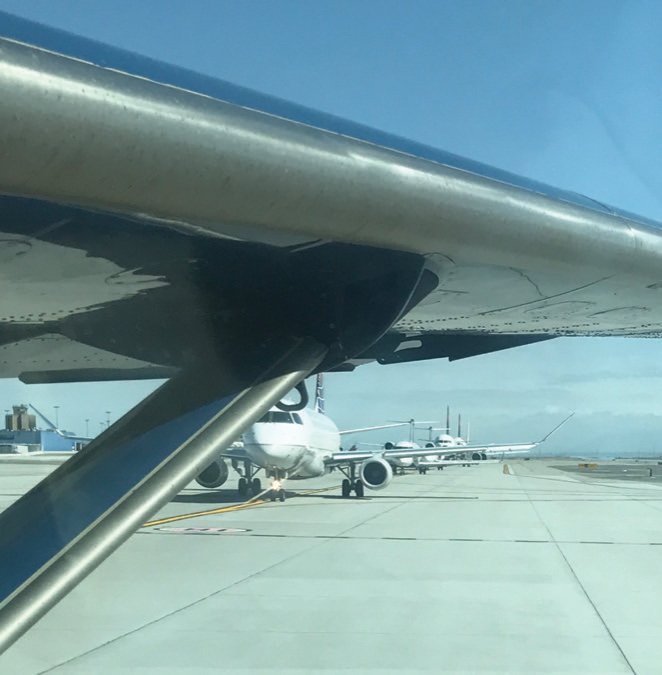
One of the old sayings about people who successfully negotiate emergencies is that they “just followed their training.” Flying Part 135 involves a lot of training, which is as it should be when transporting people and property. You have to do recurrent training in each airframe family once a year. If you fly IFR, you do a check ride every six months. If you fly twins, the check ride will be in a twin at one six-month interval, and in a single at the next one. The Cessna Caravan requires annual winter operations’ training. And then, of course, there is training for customers like UPS and the U.S. Forest Service, who have their own rules, procedures and requirements.
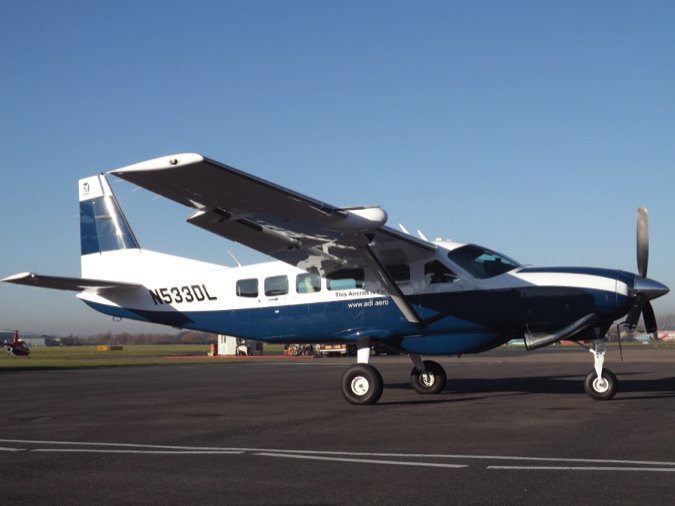
The benefit of all this training is that it feels like we are always out with a check airman doing approaches, stalls, steep turns and single-engine approaches. As much as I would like to say we get used to it, we don’t. Check rides always suck. Check airmen have a way of finding where we are rusty, lax or off our game. It’s enough to humble us. Every time.
On the other hand, the benefit of always having a check ride coming up is we are always preparing for a check ride, always trying to be on our “A” game. So when that CHT spikes at 600 degrees on climb-out in Bravo airspace, we have the competence to cross-check oil temp and pressure, see nothing wrong, then pull the engine back to idle just in case, climb on a single engine, maintain heading, roll out on our assigned altitude, take the hand-off to the next controller, diagnose that it is the instrument, not an engine about to blow up, and continue on our flight with a well-trained eye always looking to see that everything is okay. And if the engine cylinders were actually at that godawful temp, we are probably equally ready to deal with the situation. I am ready for an engine-failure event because I get to practice it for check rides.
More Risk
The time and experience I’ve gained in the past year have made me more safety-conscious, but I can see a couple of downsides.
One downside is I have increased exposure. Just as people who don’t drive who are far less likely to be in a car accident, people who fly less are less likely to be in an aircraft accident. The difference between flying 50-70 hours in a month instead of a year means I have a lot more exposure to the hazards of flying.
Will I ever have a for-real engine failure? Chances are yes. Since I use at least one engine every day, and engines do occasionally fail, I am more likely to encounter a failure than pilots who fly less frequently. Fortunately, turbine engines are more reliable than piston engines, so that lowers my chances. I fly lots of twins, so I benefit from having powerplant redundancy. But flying 10 times as much as I used to translates to 10 times the risk exposure.
I also have realized I am at greater risk from exposure to less-experienced pilots. I fly into several training airports and some popular backcountry haunts where people are getting their first taste of backcountry flying. My hope is that my experience will help me quickly spot and avoid potential conflicts.
The critical thing I have learned over the past 18 months is that complacency is the most dangerous risk of all. Sure I fly nearly every day, in all kinds of weather, in all kinds of airframes. I could easily be swayed by the illusion that my greater skills will somehow protect me against bad judgment, but I have read too many accident reports that mention a 10,000-hour pilot to feel like experience gives you a pass. Flying safely and managing risk is a daily choice, and flying daily can lead to complacency.
Continuing Education
With 18 months of experience flying Part 135, I definitely am a deliberately safer and more thoughtful pilot. I have definitely improved my stick-and-rudder and radio skills, and my overall training and proficiency. I feel more prepared and competent in handling situations in the air, including emergencies.
That said, every check ride still leaves me humbled. And whenever I fly with people who have much greater knowledge and experience—and there sure are a lot of them out there—I am struck by how much I still have to learn and master.
That is the thing I love about aviation: It offers continuous challenges and opportunities for learning, and even the most experienced pilots still make errors. Whether I am in the cockpit or the training room, I am definitely always learning and I can tell that it will remain that way for the foreseeable future. Perhaps that is what motivated me to change careers. And it’s a hoot when people call me Captain.
The Caravan And Icing
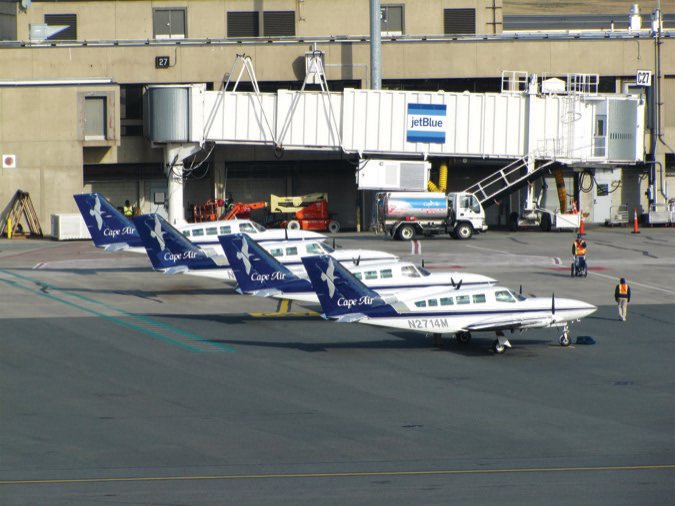
Despite its capabilities, the record shows the Cessna Caravan doesn’t handle airframe ice well. A 2006 airworthiness directive requires inserting an ice-oriented supplement into the Airplane Flight Manual, which imposes equipment requirements and specific pilot training. The supplement also supplies updated climb performance charts for planning takeoffs in icing conditions, with anticipated climb rates and gradients for an ice-laden airframe. Drift-down charts for planning controlled ice-contaminated descents also are included. They provide a tool to pre-plan a route when deciding whether to dispatch in ice.
Risk And Part 135
The FAA’s Part 135 rules take the common and familiar Part 61 pilot certification and Part 91 operating regulations up a notch. They are the next rung on the regulatory ladder from private, business and corporate, personal and recreational flying to doing it for money, and impose an organized structure that likely doesn’t exist in most non-commercial Part 91 operations.
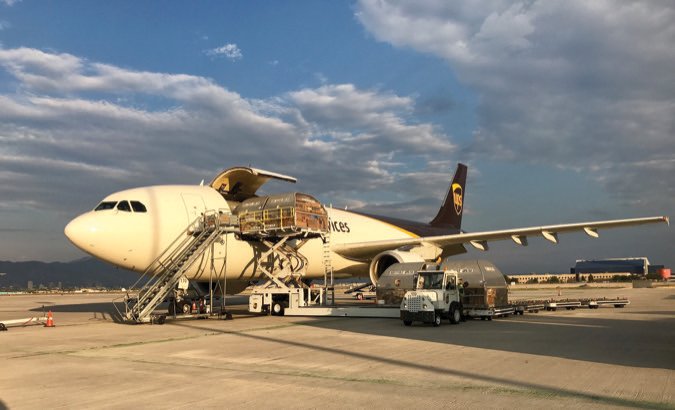
Part 135 operations can be broken down in several ways. For example, the rules distinguish between interstate and intrastate operations, and treat unscheduled, on-demand service differently from scheduled flights offered to the public in airplanes seating no more than nine passengers. They also mandate minimum amounts of formal flightcrew training, along with regular checkrides.
The idea, of course, is further minimizing the risk of flight operations when people or property are involved. Which at least in part says our everyday Part 91 operations are allowed to impose greater risk when it’s just ourselves on the bubble.
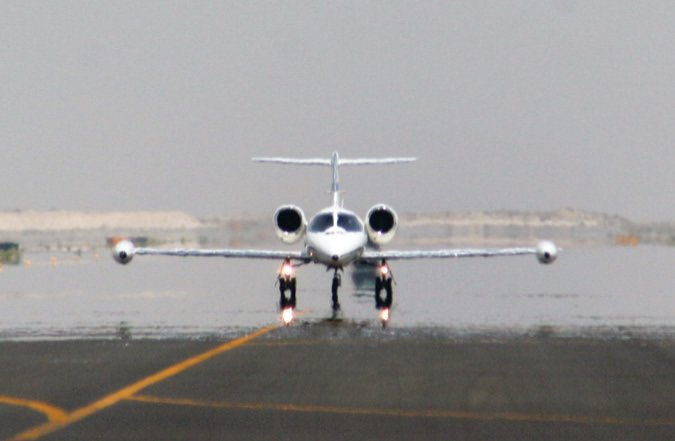
What does any of this mean for operating personal aircraft? It means one thing we can do to further minimize risk of our Part 91 operations is to think about Part 135’s major themes, including regular, structured training and checkrides, plus its operational and maintenance considerations, and how we might apply them. — J.B.
Mike Hart flies his Piper J3 Cub and Cessna 180 when he’s not schlepping people and packages for a Part 135 operator. He’s also the Idaho State Liaison for the Recreational Aviation Foundation.

